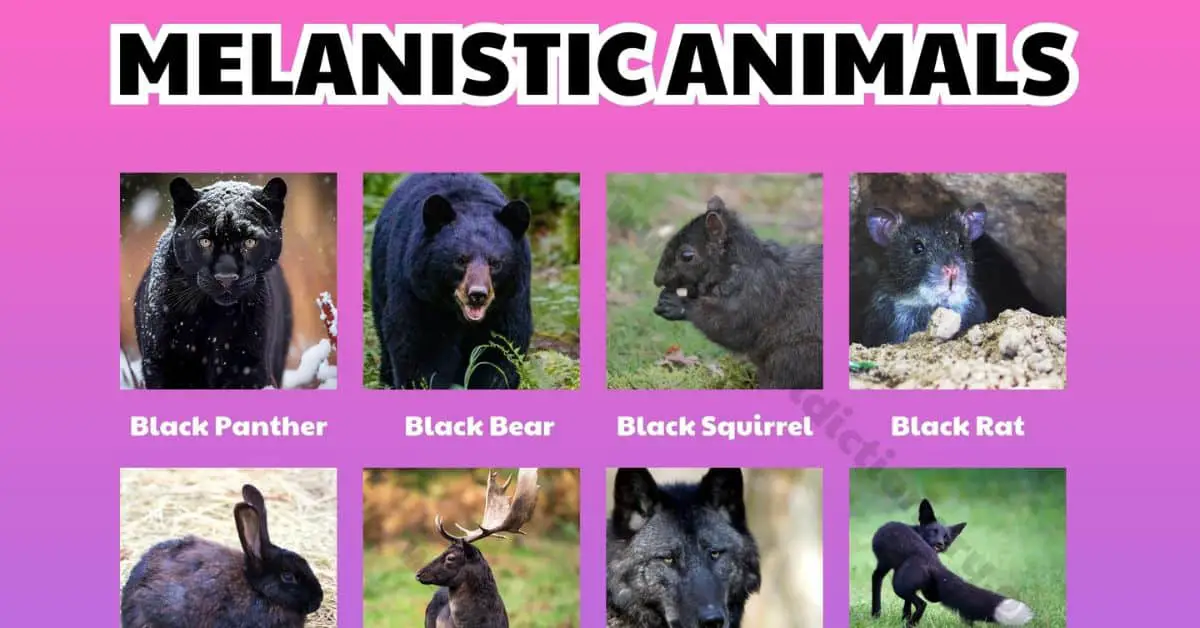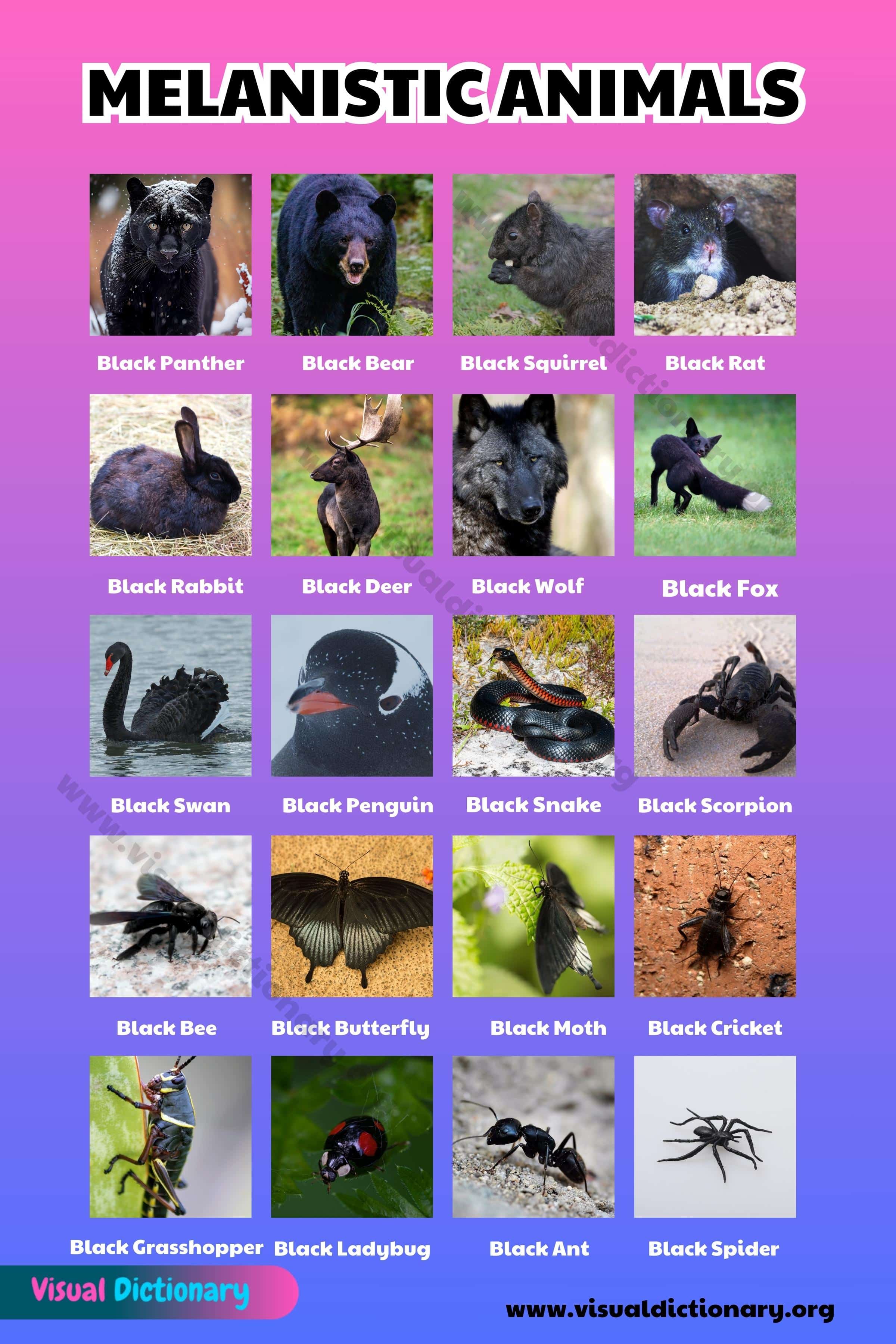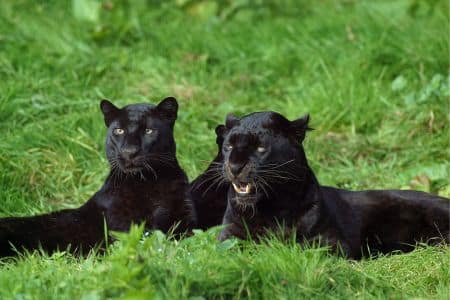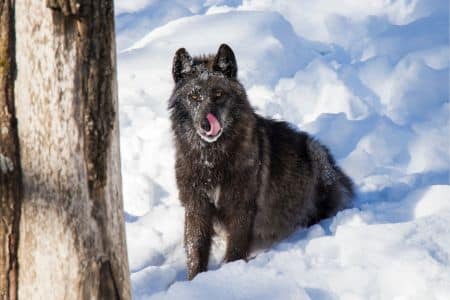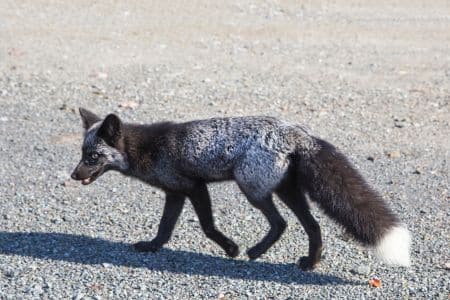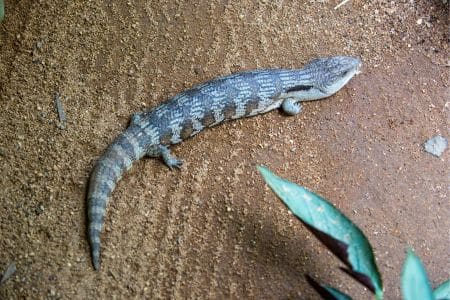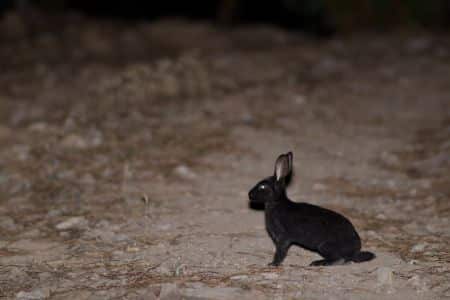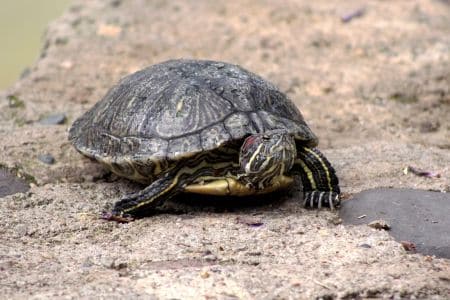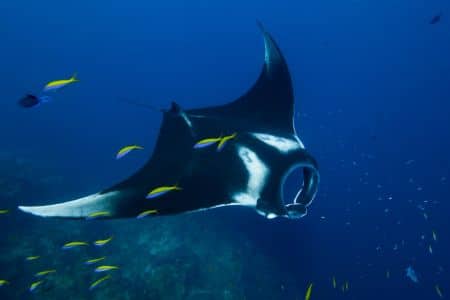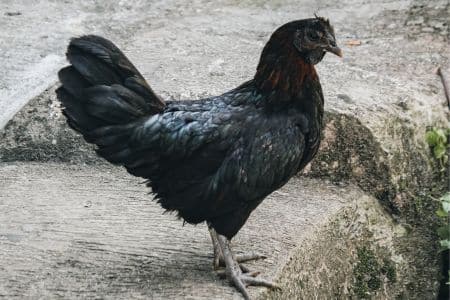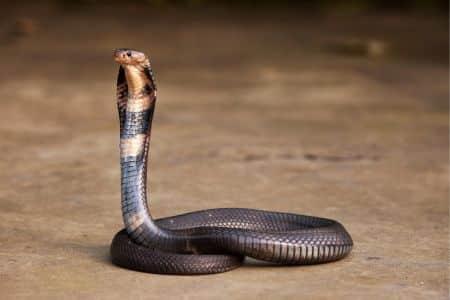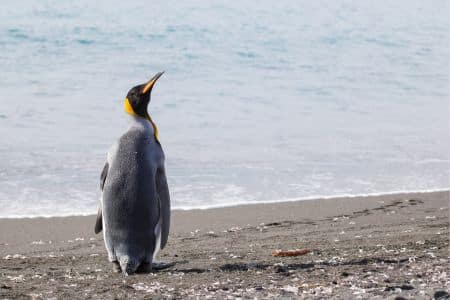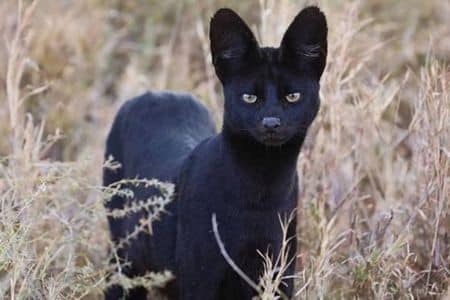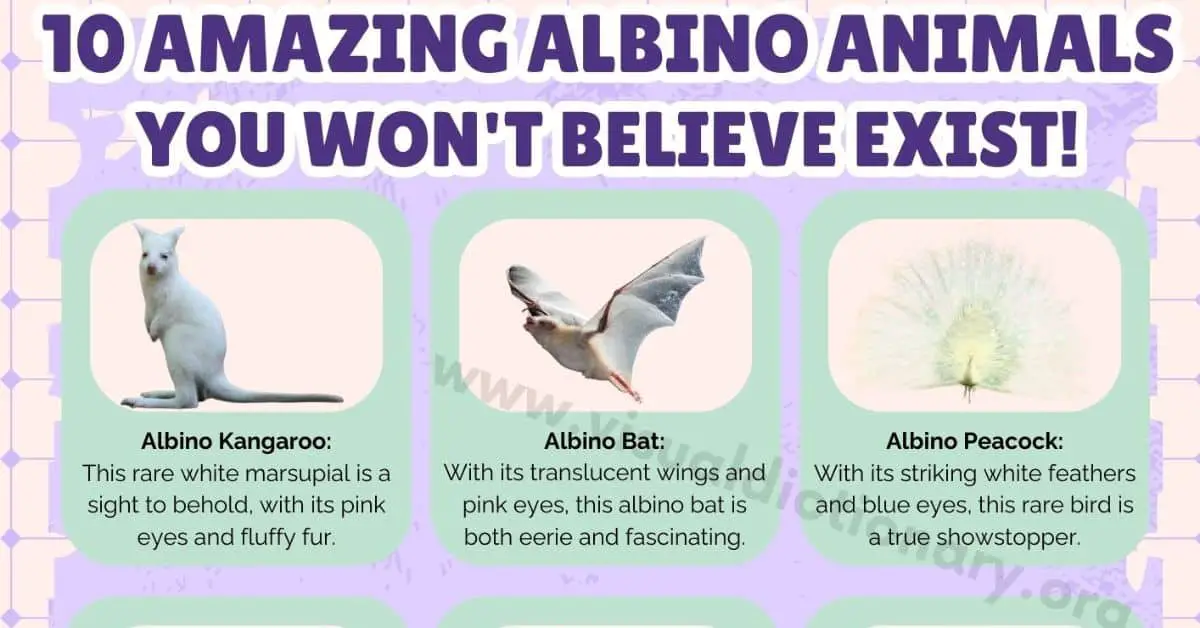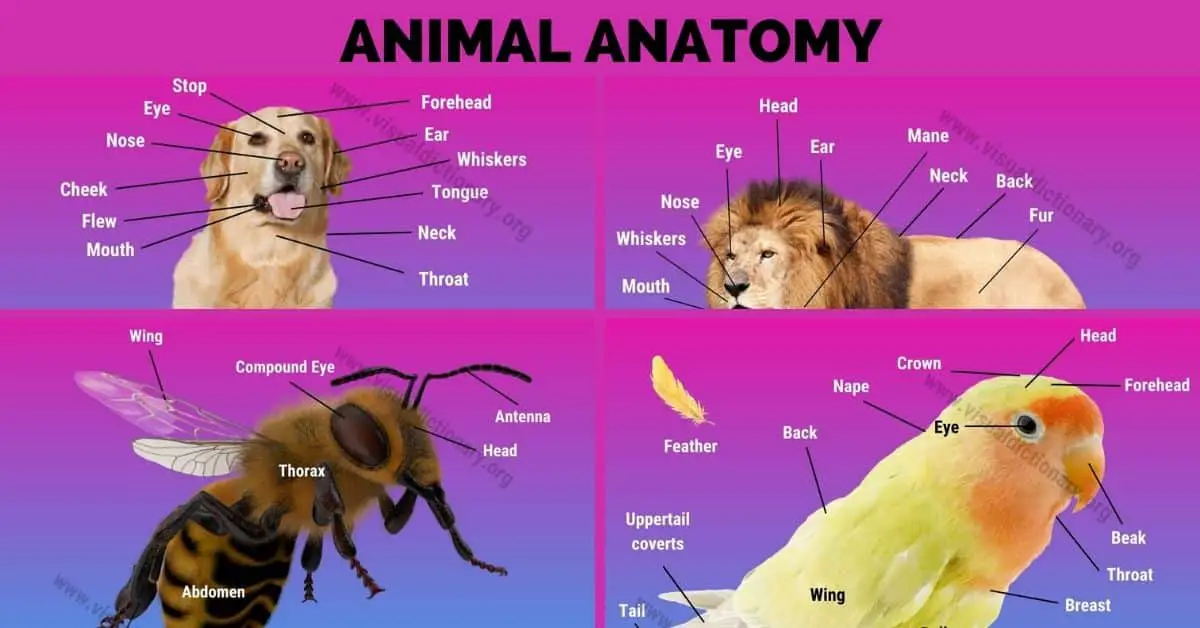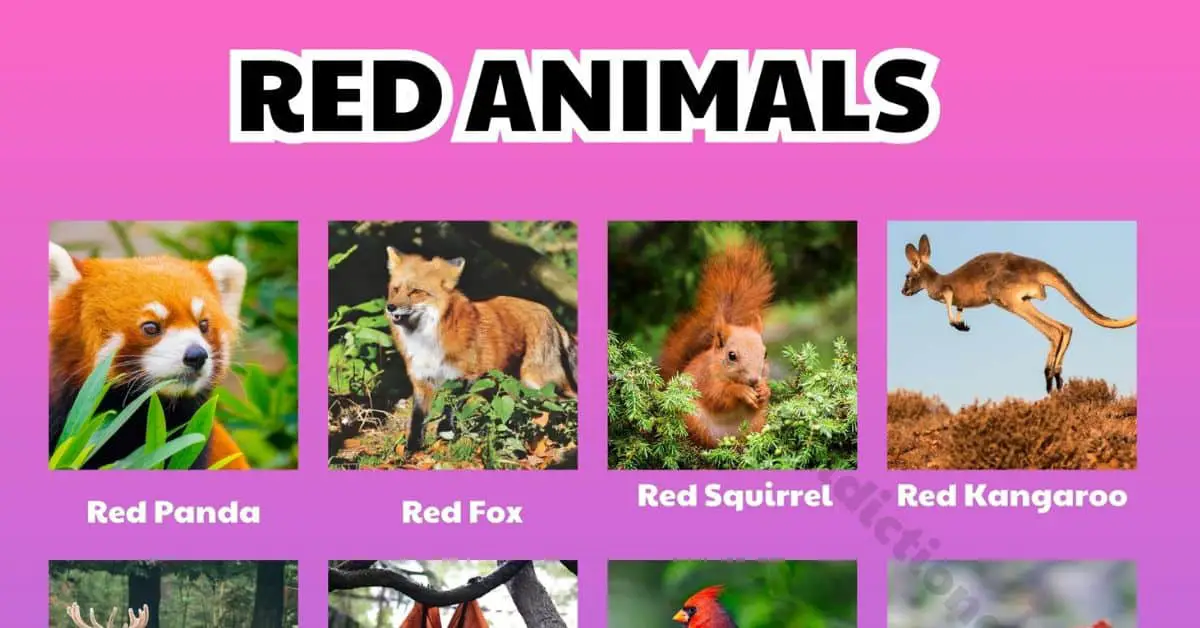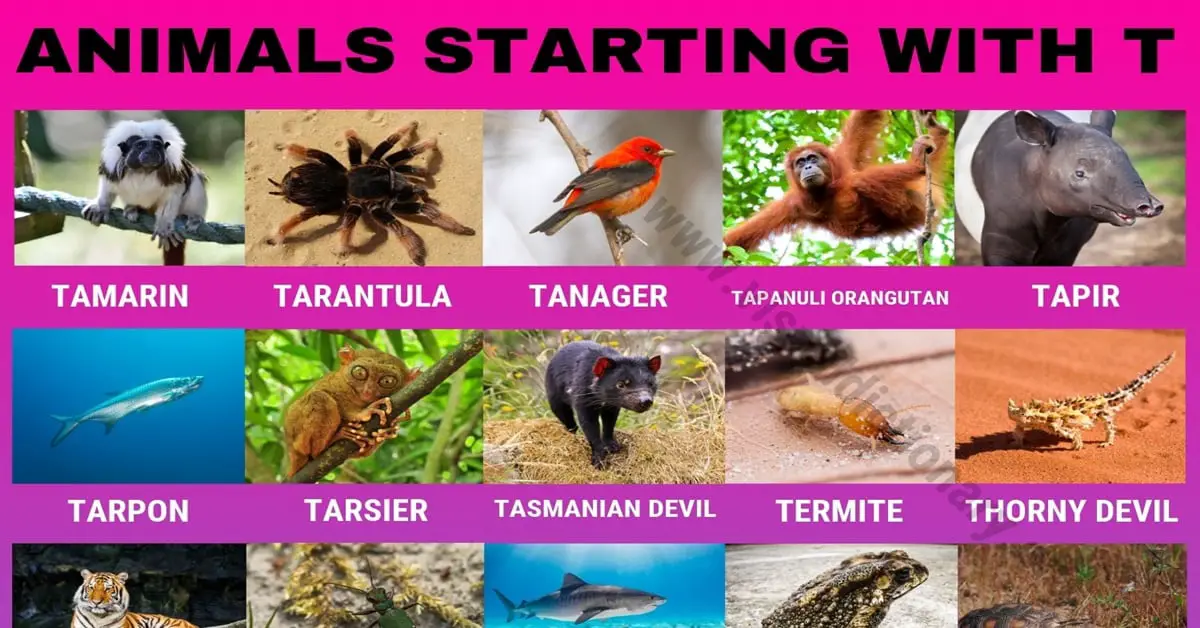Melanistic animals are a fascinating and unique group of creatures that have captured the attention of scientists and animal enthusiasts alike. Melanism is a genetic mutation that causes animals to have more dark pigment in their skin, hair, and feathers, resulting in a black or dark-colored appearance. This mutation occurs in a variety of animals, including mammals such as squirrels, cats, and canids, as well as reptiles, birds, and insects.
In this article, we will explore the fascinating world of melanistic animals, including the advantages and disadvantages of melanism and some of the most incredible examples of melanistic creatures from different categories. Join us as we delve into the world of these captivating animals and discover what makes them so unique and special.
Table of Contents
Melanistic Animals
What Are Melanistic Animals?
Melanistic animals are animals with an increased amount of the dark pigment melanin in their skin, hair, and feathers, etc., giving them a dark appearance. Melanism is a genetic mutation that occurs in many different types of animals, including mammals, reptiles, and insects.
Melanistic animals are just the opposite of albino animals, which have white body. Melanistic animals have too much melanin pigment in their skin, which affects their hair, eyes, and skin color. These animals have an abundance of melanin causing them to be either completely black or partially black in color.
Adaptive melanism has been shown to occur in a variety of animals, including mammals such as squirrels, many cats and canids, and coral snakes. Melanistic animals have been sighted and recorded in species of penguins, jaguars, wolves, deer, chickens, seals, antelope, owls, turtles, zebras, camels, and many other animals and birds. This phenomenon can occur due to man-made causes, or because of natural genetic mutations too.
Melanism is often mistaken for other conditions such as leucism, which is a genetic condition that causes a partial loss of pigmentation in an animal’s skin, hair, and feathers. In contrast, melanism is an increase in pigmentation. While melanistic animals may appear all black, they can still have patterns and markings that are visible under certain lighting conditions.
Common Melanistic Animals with Facts
Black Panther
The black panther is a melanistic color variant of leopards and jaguars. They are not a separate species, but rather the result of an over-development of melanin. Black panthers are known for their stealth and agility, making them excellent hunters in the wild.
Black Wolf
Black wolves are a rare color variant of gray wolves. They are often mistaken for their cousin, the coyote, due to their similar appearance. Black wolves are known to be highly adaptable and can survive in a variety of habitats, from forests to deserts.
Silver Fox
Silver foxes are a melanistic color variant of the red fox. They are known for their beautiful silver-gray fur, which is highly prized in the fur trade. Silver foxes are also popular as domesticated pets due to their friendly and playful nature.
Melanistic Eastern Blue-tongued Lizard
The melanistic eastern blue-tongued lizard is a rare color variant of the eastern blue-tongued lizard. They are known for their black skin and scales, which provide excellent camouflage in their natural habitat. These lizards are also popular as pets due to their docile nature and ease of care.
Melanistic European Rabbit
The melanistic European rabbit is a rare color variant of the common rabbit. They are known for their black fur and are often considered a pest in agricultural areas due to their tendency to destroy crops.
Melanistic Red-eared Slider
The melanistic red-eared slider is a rare color variant of the red-eared slider turtle. They are known for their black skin and shell, which provide excellent camouflage in their natural habitat. Red-eared sliders are popular as pets due to their small size and ease of care.
Melanistic Manta Rays
Melanistic manta rays are a rare color variant of the manta ray. They are known for their black skin and white markings, which provide excellent camouflage in the ocean. Manta rays are also popular among scuba divers due to their gentle nature and graceful movements.
Ayam Cemani Chicken
The Ayam Cemani chicken is a rare breed of chicken that is entirely black, including its feathers, skin, and internal organs. They are highly prized for their unique appearance and are often considered a symbol of good luck in their native Indonesia.
Melanistic Forest Cobra
The melanistic forest cobra is a rare color variant of the forest cobra. They are known for their black skin and are highly venomous, making them dangerous to humans. Forest cobras are often found in dense forests and are known for their aggressive nature.
Black King Penguin
The black king penguin is a rare color variant of the king penguin. They are known for their black feathers and are often found in the sub-Antarctic region. King penguins are the second-largest penguin species, with males reaching up to 3 feet in height.
Black Serval Cat
The black serval cat is a rare color variant of the serval cat. They are known for their black fur and are highly sought after as exotic pets. Serval cats are native to Africa and are known for their long legs and large ears, which help them hunt in the grasslands.
Types of Melanistic Animals
Melanistic Birds
Melanism is relatively rare in birds, but some species can exhibit this trait. The most well-known melanistic bird is the black swan. Other melanistic birds include the black rook, blackbird, and the common raven. Melanistic birds are often more visible to predators, but they can also be better adapted to their environment, providing them with a competitive advantage.
Melanistic Mammals
Melanism is more common in mammals than in birds. Among the most famous melanistic mammals are the black panthers, which are actually melanistic leopards or jaguars. Other melanistic mammals include black wolves, black foxes, and black squirrels. Melanism can provide an advantage for some mammals in their environment, such as in snowy areas, where a dark coat can help them blend in with the shadows.
Melanistic Reptiles
Melanism can also occur in reptiles, such as the black mamba and the black king cobra. Melanistic reptiles are often more visible to predators, but they can also be better adapted to their environment, providing them with a competitive advantage.
Melanistic Insects
Melanism can also occur in insects, such as the peppered moth. This moth is usually light-colored, but in areas with high pollution levels, it can turn black due to melanism. This adaptation helps the moth to blend in with its environment, making it less visible to predators.
List of Melanistic Animals
- Black Panther
- Black Bear
- Melanistic Servals
- Black Squirrel
- Black Deer
- Black Fox
- Melanistic Coyotes
- Black Penguins
- Black Bobcat
- Black Manta Ray
- Black Wolf
- Silver Fox
- Melanistic Eastern Blue-tongued Lizard
- Melanistic European Rabbit
- Melanistic Red-eared Slider
- Melanistic Manta Rays
- Ayam Cemani Chicken
- Melanistic Forest Cobra
- Black King Penguin
- Black Serval Cat
- Black Swan
- Black Rook
- Blackbird
- Raven
- Black Fox
- Black Squirrel
- Black Mamba
- Black King Cobra
- Peppered Moth
Frequently Asked Questions
What causes melanism in animals?
Melanism is caused by a genetic mutation that leads to an increase in the production of melanin, the pigment responsible for skin and fur coloration. This mutation can occur naturally in the wild or can be selectively bred in captivity.
Are melanistic animals more susceptible to certain diseases?
There is no evidence to suggest that melanistic animals are more susceptible to diseases than their non-melanistic counterparts. However, some studies have suggested that melanism may be associated with certain health issues in specific species, such as jaguars.
What is the difference between melanism and albinism?
Melanism and albinism are opposite phenomena. While melanism results in an increase in melanin production, albinism is characterized by a lack of melanin production. This leads to white or pale-colored skin, fur, and eyes.
Can melanistic animals be kept as pets?
In most cases, it is illegal to keep melanistic animals as pets. Additionally, many melanistic animals are wild species that require specialized care and habitats, making them unsuitable for domestication.
What are some examples of melanistic animals?
Melanism has been observed in a wide range of species, including jaguars, panthers, black squirrels, black wolves, and black penguins. Some species, such as the black jaguar, are more commonly melanistic than others.
Are melanistic animals more common in certain species?
Melanism is more common in some species than others. For example, melanistic jaguars are relatively common, while melanistic zebras are extremely rare. The prevalence of melanism within a species can be influenced by a variety of factors, including geographic location and environmental conditions.
Related terms:
